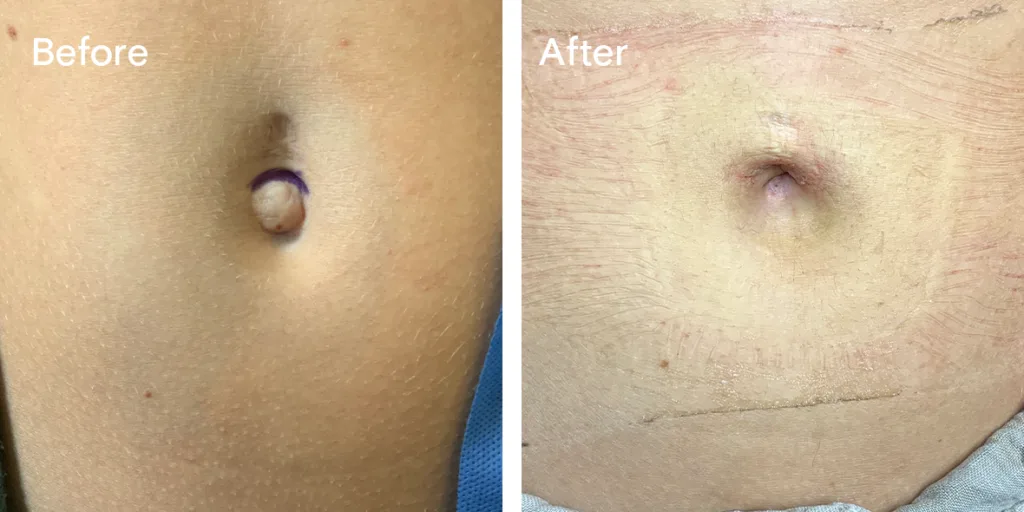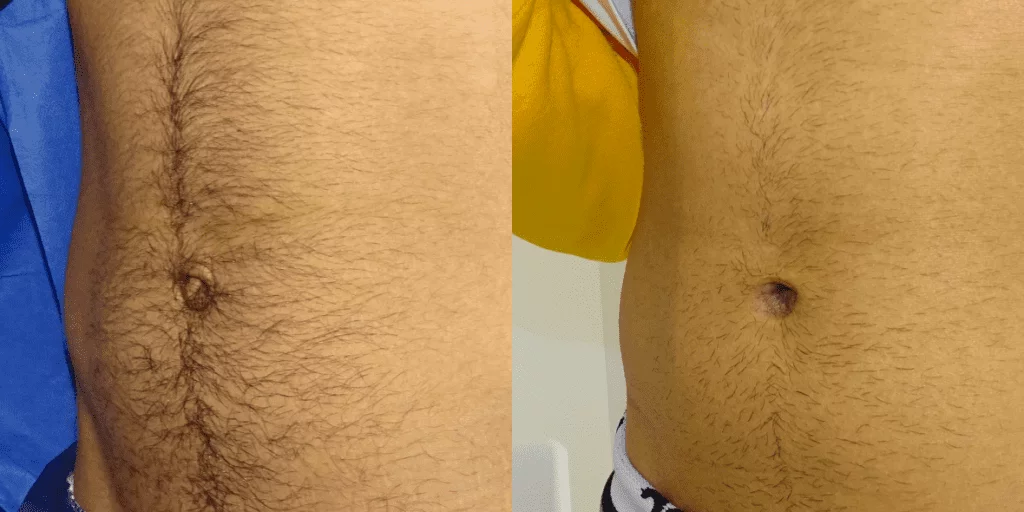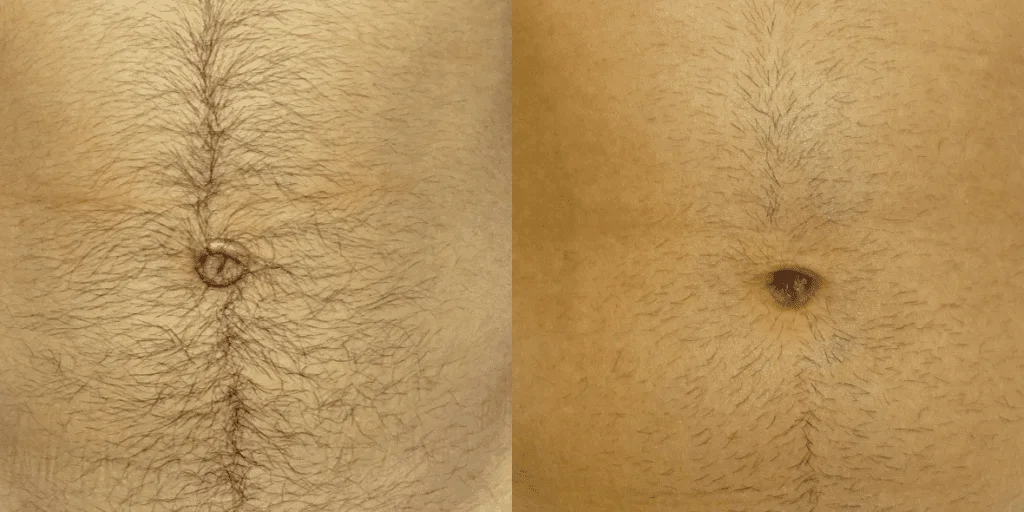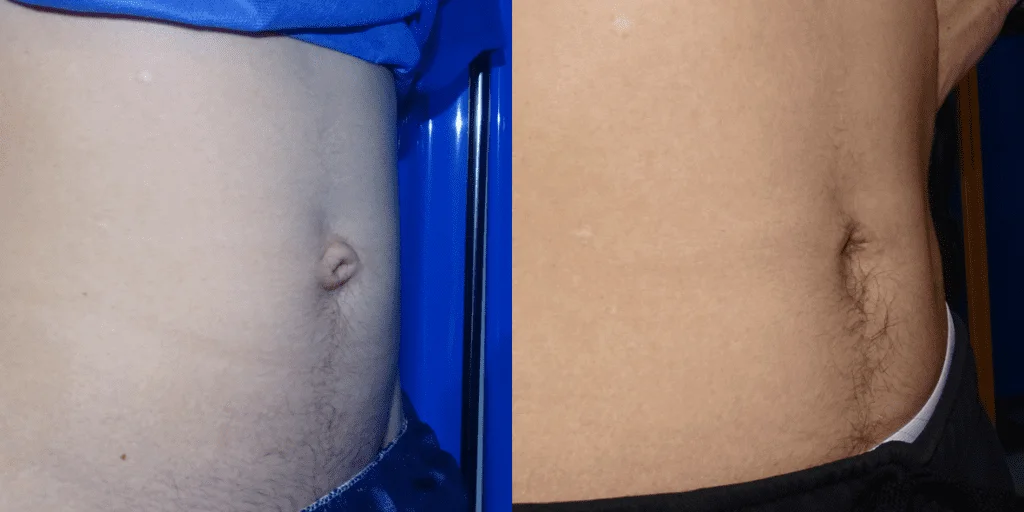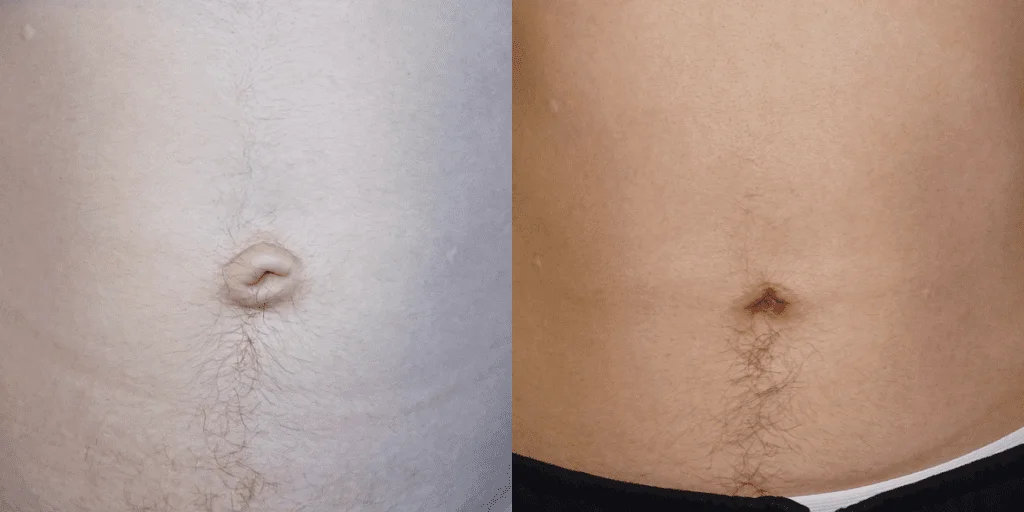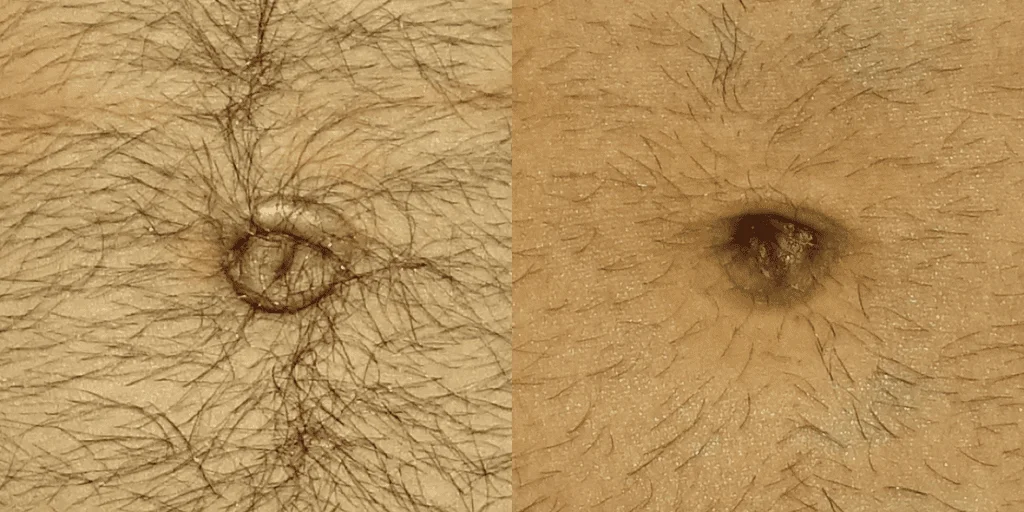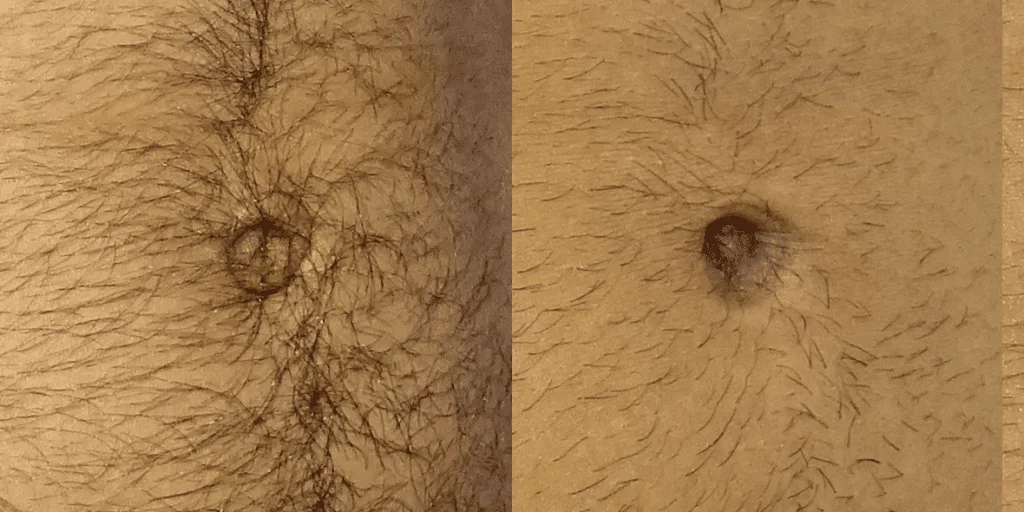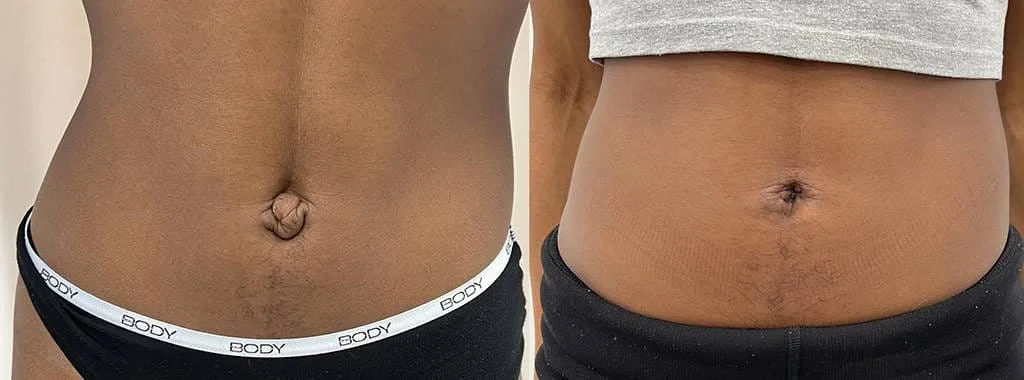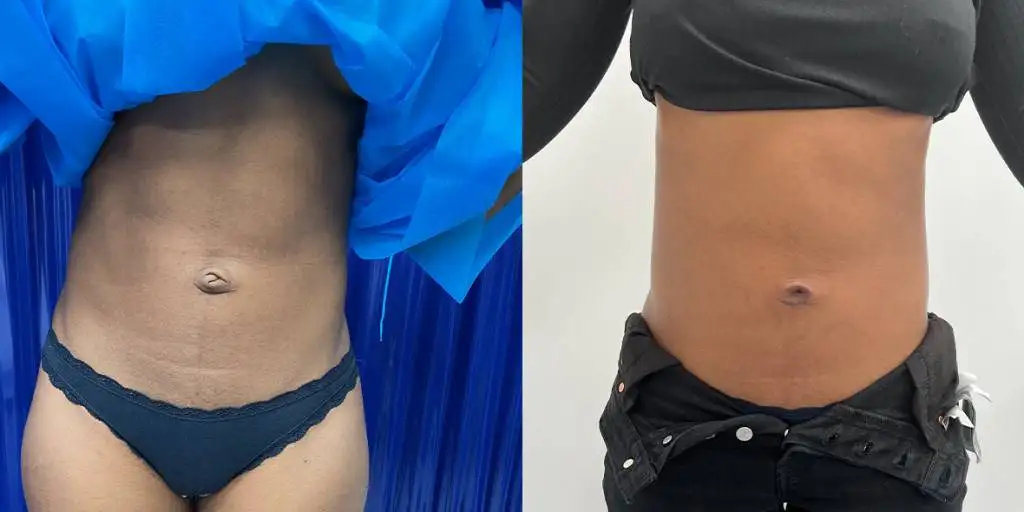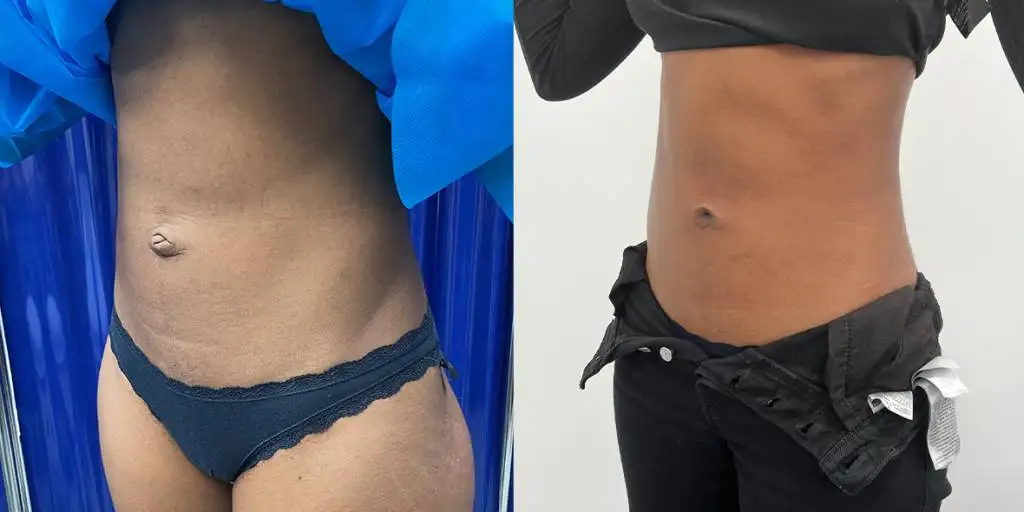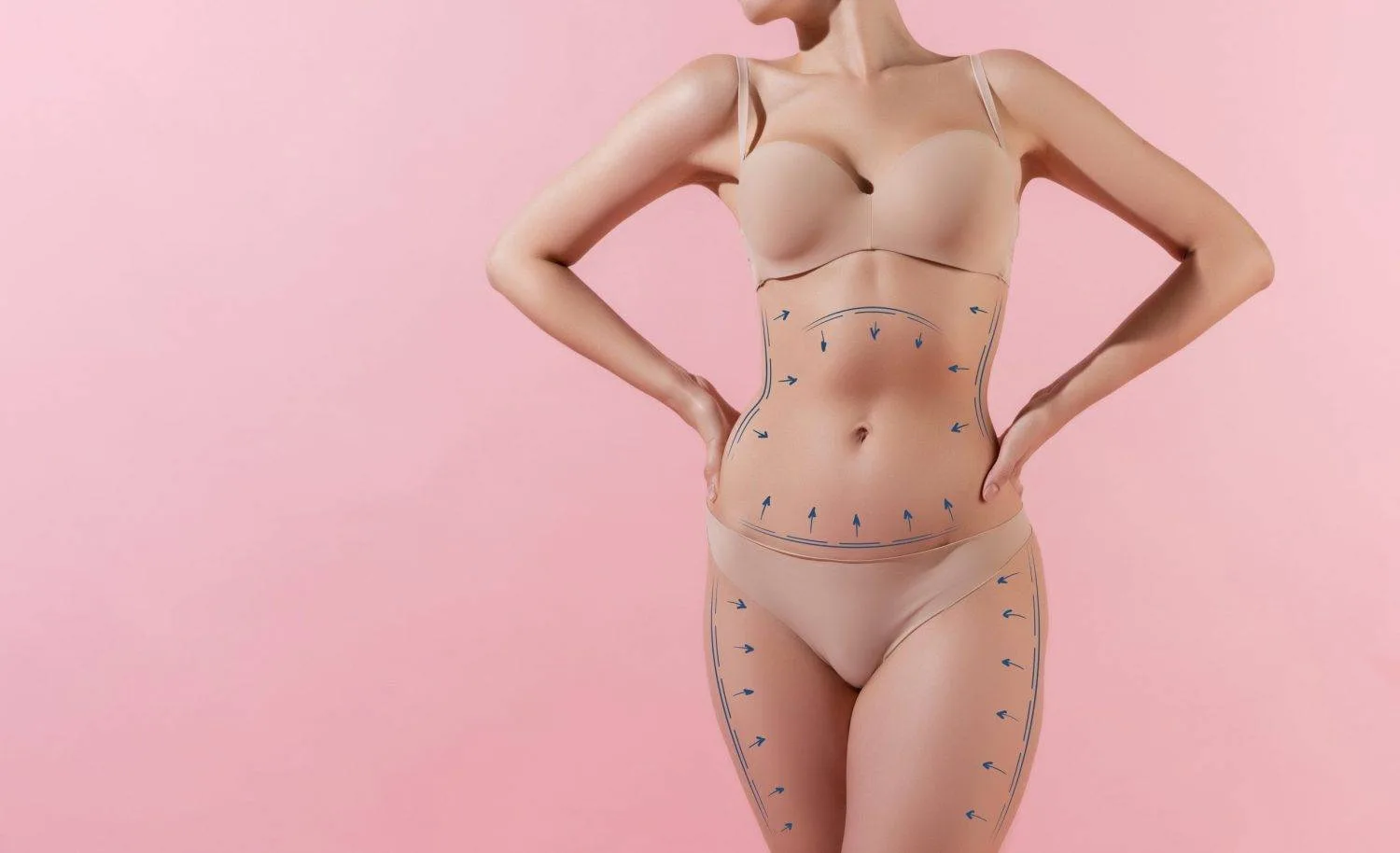If your post-pregnancy belly button is protruding and causing discomfort or self-consciousness, an umbilicoplasty in London can remove excess skin to create an “innie” for a more tucked-in appearance.
At the CREO Clinic, our double board-certified cosmetic surgeon Dr. Omar Tillo performs umbilicoplasty with years of experience in body contouring procedures. With 4,500+ successful transformations behind him, he combines surgical skill with unmatched precision to reshape your belly button with minimal scarring.
If you’re interested in belly button surgery in London, book a consultation with Dr. Tillo to discuss your concerns, desired outcomes, and suitability for the procedure.
What is Umbilicoplasty?
Umbilicoplasty (belly button surgery) reshapes an outward belly button, removinges excess skin in and around the belly button to create a vertical, tucked-in appearance.
For many patients, belly button augmentation is a purely aesthetic choice to boost self esteem in certain clothing or swimwear. It can also reduce scarring from belly button piercings or revise a previous surgery.
Overview of Umbilicoplasty Procedure
Treatments
1Results
7 DaysAnesthesia
Sedation or Local AnaesthesiaSurgery Time
1 HourOff-Work
7 DaysExercise
2 WeeksFull Recovery
1-2 WeeksWhy Get Umbilicoplasty
Some people feel self conscious about the appearance of their belly button, and an umbilicoplasty is a procedure with many varied benefits. Patients may choose to get the surgery for any of the following reasons:
- ‘Innie’ to ‘outie’ – Turn what is commonly called an ‘outie’ belly button (where the skin in the belly button protrudes outward) into an ‘innie’ belly button (where the belly button dips inward).
- Deal with scars – Remove scars in the belly button from a piercing or prior surgery.
- Fix umbilical hernias – Repair an umbilical hernia, which presents as a painless bulge in or around the belly button.
- Adjust size – Reduce the size of naturally large navels or an expanded belly button due to pregnancy or significant weight loss.
- Repair injury – You may have suffered a traumatic injury that has changed the shape or appearance of your belly button. Umbilicoplasty surgery can help to repair this damage.
- Correct previous abdominal surgeries – For some individuals, a procedure they had in the past may have left them with a belly button that needs to be corrected with further surgery.
Before and After Belly Button Surgery
See What Our Patients Have to Say
Who is a Good Candidate for Umbilicoplasty?
During your consultation, Dr Tillo, a world renowned specialist plastic surgeon, will examine you to determine your suitability for an umbilicoplasty. You may be experiencing one or all of the following concerns:
- Scarring as a result of a piercing
- Lax skin after weight loss
- Alteration to appearance of your navel due to pregnancy
- An outie belly button caused by an umbilical hernia
In general, any adult who has concerns about the shape and size of their belly button can pursue umbilicoplasty, but all patients should be mentally and physically prepared for this cosmetic surgery and have realistic expectations of its outcomes.
However, people who are significantly overweight or planning future pregnancies are generally not good candidates for an umbilicoplasty. This is because weight fluctuations can affect the results of the surgery, and pregnancy can stretch the abdominal muscles again.
How Much Does Umbilicoplasty Cost in London?
The exact price of your umbilicoplasty will be determined following a consultation with Dr Tillo, as the cost of the surgery varies depending on different surgical factors relating to your needs, for example:
- Whether you are having the surgery under a general anaesthetic or a local anaesthetic.
- Whether it is your first umbilicoplasty or a revision of surgery from another clinic.
- If your surgery is combined with another procedure, this will alter the price.
- Whether your umbilicoplasty is focused on the skin alone or if the repair of an umbilical hernia is included.
In general, the price of an umbilicoplasty at the CREO Clinic starts from £3,750.
A minimum deposit of £1,500 is required for all procedures. Please see our financing page for up to date interest rates and T&C’s.
At the CREO Clinic, we advise that you prioritise your safety over minimising cost. Focus on choosing a respected practitioner you can trust to help you achieve your body goals with care and skill.
What will my treatment package include?
Your umbilicoplasty treatment package includes the surgery itself, as well as after-care and post-surgery consultations to monitor your recovery.
Preparing for Belly Button Surgery
There are several preparations that are recommended to umbilicoplasty patients leading up to the surgery:
- Smoking – You will also need to stop smoking any nicotine products (including vaping, patches, etc) in the four weeks leading up to your umbilicoplasty, as nicotine can substantially increase the risk of complications.
- BMI – You will need to make sure your BMI remains under 30 to keep the risk of complications to a minimum.
- Oestrogen contraceptives/HRT – If you take oral contraceptive pills or are on a course of HRT, you will need to stop to reduce the risk of thrombosis. Ensure that you use alternative contraceptives during this period.
- Alcohol – You should try to reduce your alcohol consumption prior to your surgery as this can delay the healing of your incisions.
- Prepare your home for recovery – Prepare your home to be as comfortable as possible for your return, and ensure you have support in place for home based responsibilities such as looking after children and pets.
How the Umbilicoplasty Procedure Works
After administering an anaesthetic, the surgeon makes an incision inside the belly button – this will mean they are hidden from view once healed. The exact placement of the incisions varies depending on the individual requirements of each patient.
Excess skin or fat around the belly button is removed and repositioned according to the desired outcome. To achieve a higher or lower position, your surgeon will remove the edges of your belly button as necessary. If you require hernia repair, your surgeon will use dissolvable stitches to tighten up the abdominal wall, relieving the pressure on your umbilicus.
Once the main steps of the procedure are complete, your surgeon closes your incisions using dissolvable sutures. You will not need to have any stitches removed post surgery.
Umbilicoplasty Recovery & Aftercare
Immediately after your umbilicoplasty, you may experience swelling and bruising in the affected area that should dissipate in a few days.
In general, an umbilicoplasty has a relatively short recovery period and most patients are able to return to work and complete most light, daily activities a week after surgery. However, you must wait at least 2-3 weeks before resuming more strenuous exercise to give the body sufficient time to heal.
What Results Can I Expect?
An umbilicoplasty provides patients with a narrower oval-shaped belly button that dips inward. The final results of your surgery will start to become apparent after a few weeks once the swelling and bruising in the area has largely subsided. Furthermore, depending on the nature of your procedure, you may be left with a visible scar in the area, which gradually fades over several months.
Risks of Umbilicoplasty
Umbilicoplasty is a short and uncomplicated procedure and in the majority of cases it delivers high levels of satisfaction with low levels of risk. However, like any surgical procedure, there are some potential risks to note, such as:
- Delayed healing of incisions,
- Incision infection
- Bleeding at incision sites
- Over/under correction of the belly button
- Asymmetry of the belly button
Complementary Procedures
Umbilicoplasty and Abdominoplasty
Abdominoplasty is a surgery that removes excess skin and fat from the abdomen area for a more contoured figure. The combination of an umbilicoplasty and abdominoplasty is ideal for patients who have both a distorted belly button and unwanted skin in the abdominal area. Choosing to have both procedures in one session is more cost-effective and allows patients to combine the recovery time.
Belly Button Surgery and Mummy Makeover
A mummy makeover is a series of body contouring surgeries that aim to contour areas of the body that have lost shape due to pregnancy or significant weight loss. Typically, a mummy makeover procedure consists of liposuction, tummy tuck, and breast augmentation.
Since the belly button is another area of the body that loses its shape during pregnancy, many women find it convenient to include a belly button surgery as part of their mummy makeover to achieve a more comprehensive transformation.
Umbilicoplasty (Belly Button Surgery) FAQs
What will my umbilicoplasty consultation involve?
Will I have a visible scar following umbilicoplasty?
How long does belly button surgery take to perform?
What type of anaesthesia is used for umbilicoplasty?
Can I have belly button surgery after pregnancy?
How are an outie and innie belly button different?
In most cases the difference between the two is simply aesthetic, but sometimes an outie can be caused by an umbilical hernia – this is where a weakness in the abdominal wall allows the intestines to push through and put pressure on the umbilicus. Umbilicoplasty can work to repair this.


